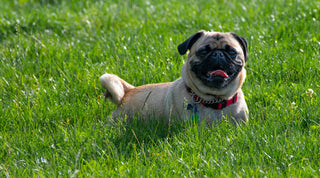Understanding the Importance of Pug Dental Care
Pug dental care is an often-overlooked aspect of their overall health. Because of their brachycephalic (short-nosed) structure, pugs are more prone to dental issues than some other breeds. Their crowded teeth in a small jaw can lead to increased plaque and tartar buildup, resulting in bad breath, gum disease, and tooth loss if not adequately cared for. A regiment of proper dental care is essential to prevent these issues and maintain your pug's oral health.
Regular Dental Check-Ups with a Veterinarian
Like humans, pugs need regular dental check-ups to ensure their teeth and gums are healthy. A veterinarian can spot early signs of dental issues and provide treatment options. They can also perform professional cleanings to remove stubborn plaque and tartar that daily brushing may not eliminate. It's recommended that pugs have a dental check-up at least once a year, although more frequent visits may be necessary for those with existing dental concerns.
Daily Brushing: A Must for Pug Oral Hygiene
Daily brushing is the cornerstone of maintaining your pug's dental hygiene. Starting this habit early in your pug’s life will help them become comfortable with the process. Use a toothbrush designed for dogs and toothpaste that is safe for canine consumption. Brush in gentle circles, reaching the front and back teeth, as well as the gumline, to minimize the risks of plaque and tartar buildup.
Choosing the Right Toothbrush and Toothpaste
For pugs, small, soft-bristled toothbrushes or finger brushes work best, given their small mouths. Never use human toothpaste, as it may contain xylitol, which is toxic to dogs. Instead, opt for enzymatic dog toothpaste, which comes in flavors that are more appealing to your pet and can help make the experience more enjoyable.
Healthy Diet and Chew Toys
A balanced diet is vital for pug dental health. Avoid giving your pug too many sugary treats, which can contribute to tooth decay. Instead, provide dental chews that are specifically designed to reduce plaque and massage the gums. Toys made from rubber or nylon can also help maintain clean teeth. However, ensure that any chew toy you select is appropriate in size to avoid any choking hazard and is durable enough to withstand their gnawing without breaking apart.
The Role of Treats and Dental Chews
Dental treats and chews are beneficial supplements to brushing but should not replace daily brushing entirely. Select treats that have been clinically proven to help reduce tartar and plaque and are endorsed by veterinary dental organizations. Always supervise your pug while they enjoy their dental chew to prevent any accidents.
A great treat to consider giving your Pug is Neo Bites Superfood Dog Treats. They're made with apple—which has malic acid known to support healthy teeth and gums—along with pumpkin, kale, peanuts, cinnamon, oats, egg, and insect protein. They're carefully formulated by a veterinarian, so you can rest assured they're getting the right amount of nutrients. Not only are these ingredients good for overall health, but they make for a delicious, rewarding treat.
Be Aware of Dental Disease Symptoms
Awareness of the symptoms of dental disease can give your pug the best chance for early intervention. Persistent bad breath, difficulty eating, excessive drooling, inflamed gums, and visible tartar on the teeth are signs that your pug may be experiencing dental issues. At the first sign of any of these symptoms, it's crucial to consult with your vet. Early treatment can prevent more severe dental disease which can lead to systemic health problems if bacteria from the mouth enter the bloodstream.
Training and Patience: Easing Into Dental Care Routines
When establishing a dental care routine, it’s important to have patience and gradually accustom your pug to the process of having their teeth brushed. Use positive reinforcement such as praise and treats to associate the experience positively. Begin by touching your pug’s teeth and gums with your fingers before introducing the toothbrush, and progressively increase the time spent brushing as they become more comfortable.
Regular Inspection for Possible Issues
As part of the routine, regularly inspect your pug's mouth for any signs of abnormalities such as loose teeth, sores, or growths. Early detection and treatment of oral problems will help prevent them from escalating into major health issues.
The Bottom Line
Your pug's dental care is a critical component of their overall well-being. Through regular veterinary check-ups, daily brushing, a healthy diet, and vigilance in noticing symptoms, you can ensure your pug maintains a happy and healthy mouth. Remember, the routine you establish today will go a long way in preventing painful and costly dental problems in the future.






